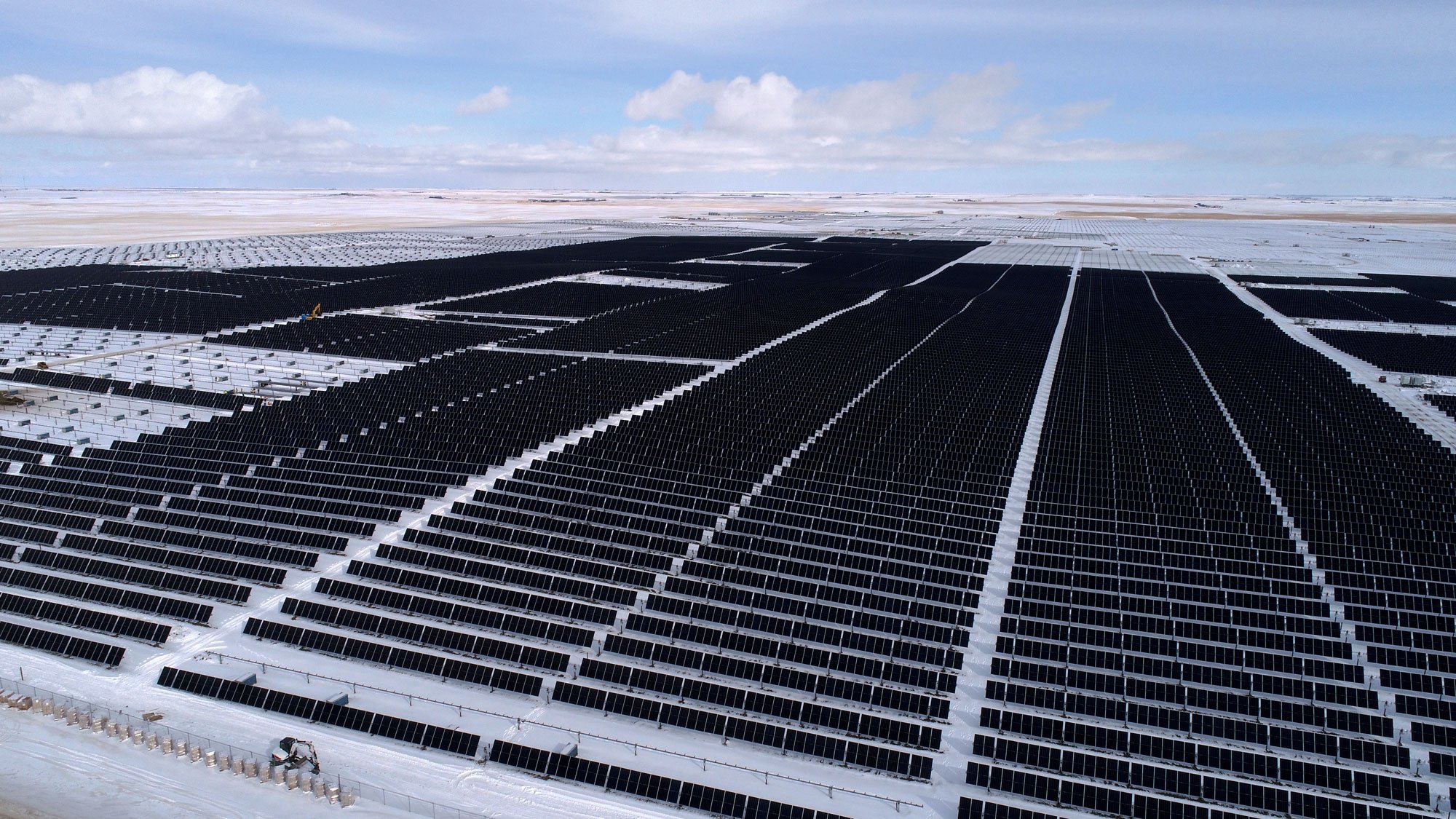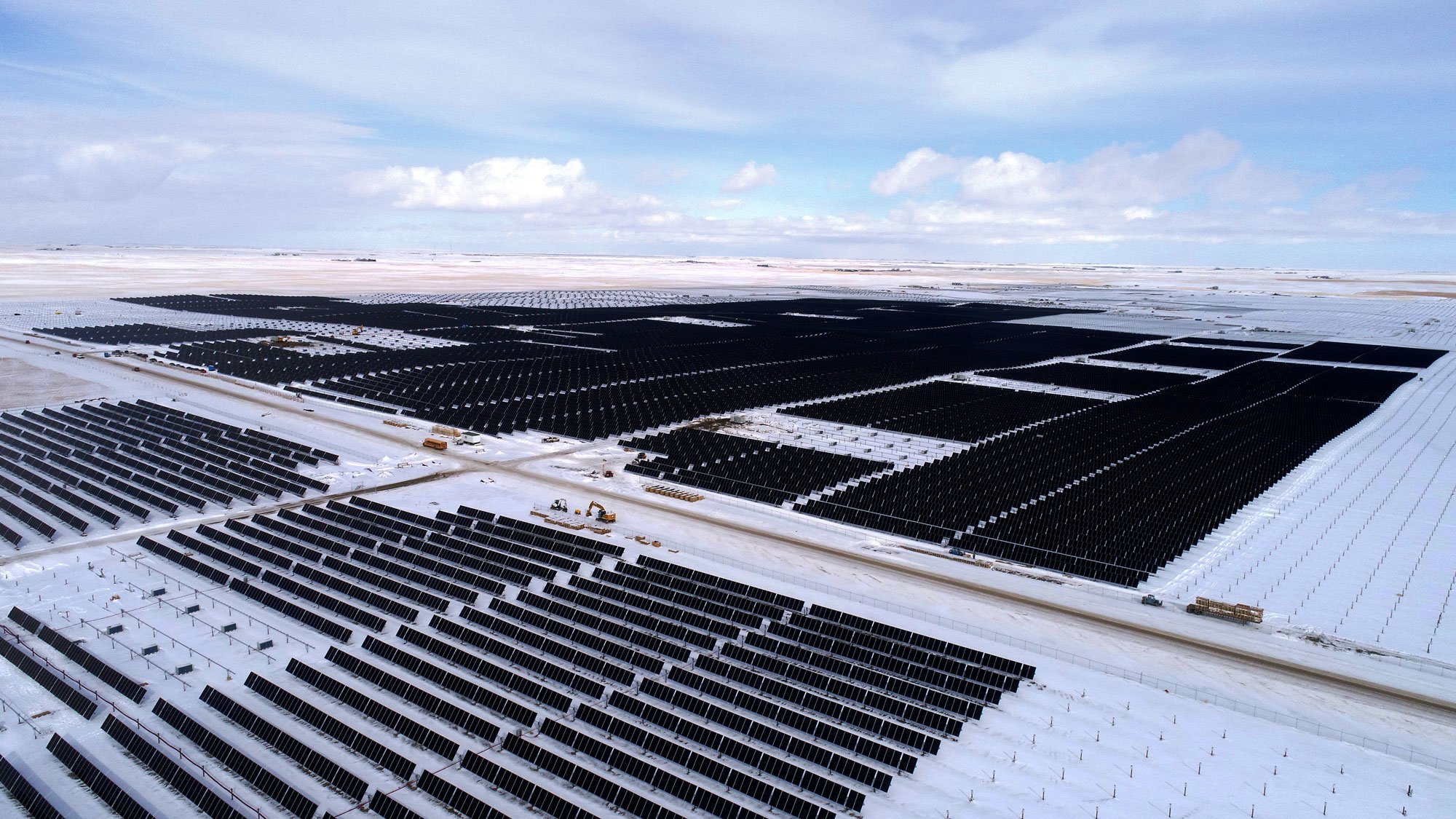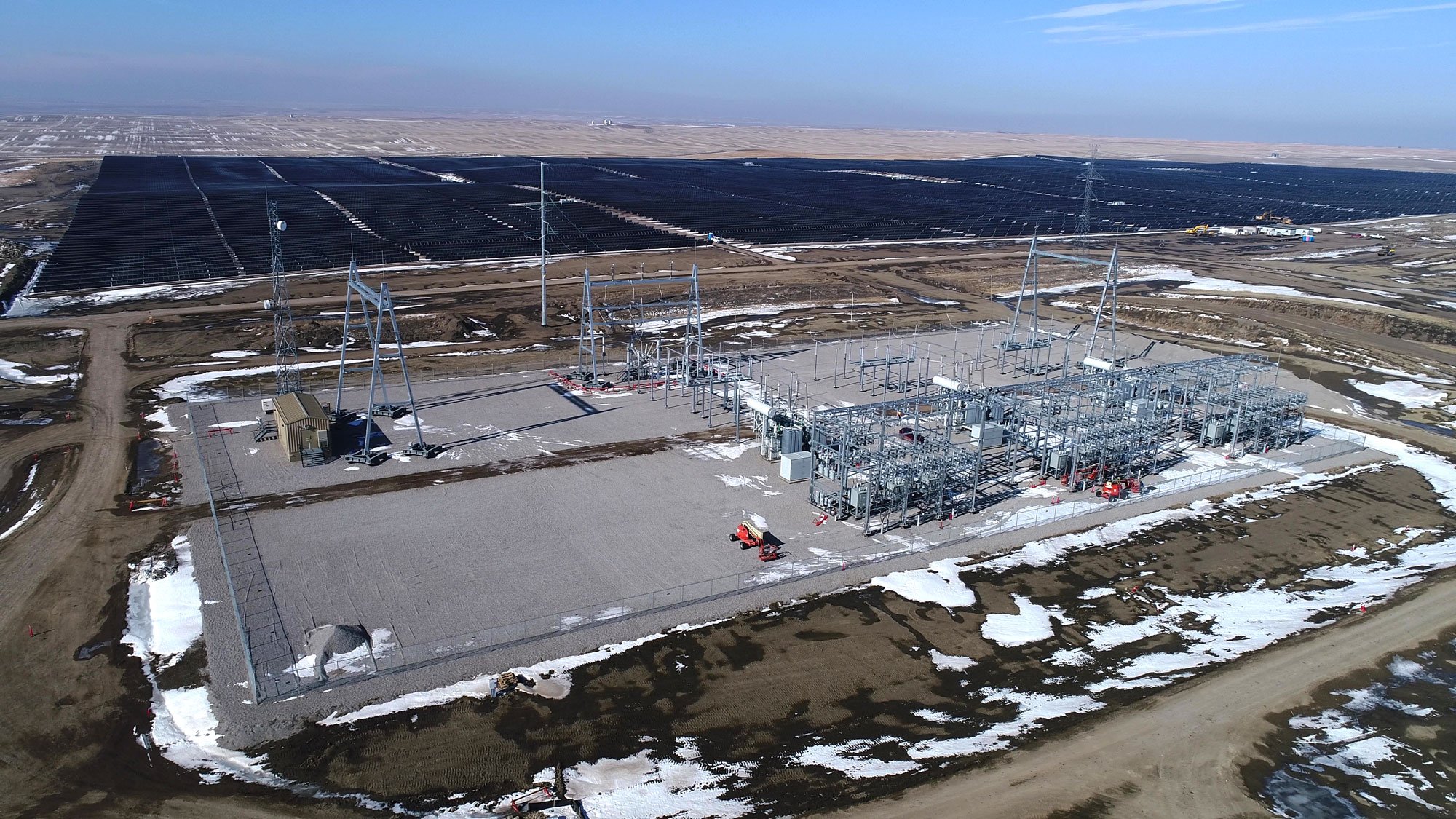Vulcan County, Alberta
Travers Solar Project
If you ever happen to fly over Vulcan County, Alberta, you’ll be forgiven for having a brief, if not alarming, moment of surprise as you look down on what appears to be a yawning black patch stitched into the prairie scenery. From above, against a quilt of greens and golds, the reflective mass will seem outrageously large. And your judgement would be correct.
Because you will be looking at the soon-to-be largest solar farm in Canada — the Travers Solar Project.
The 1,335-hectare project is located just outside the village of Lomond in southern Alberta. The location is intentional. Lomond lies within Canada’s aptly named Sunbelt, an interprovincial stretch of geography that receives, on average, the most sunny days per year in the country. The Travers Solar Project has been painstakingly designed to make the absolute most of every sunlit hour.
“We looked to optimize the design, that’s the layout, and the type of solar panel system that’s used to provide the best power production,” says Paul Walker, P.Eng., the operations manager at PCL responsible for overseeing the construction of the project. Maximizing megawatts while minimizing land use was a priority for Paul and his team, as was reducing the need to flatten the ground in preparation for installing the project’s panels — all 1.3 million of them.
“There are 228,000 steel piles, which are what gets drilled into the ground to support each of the racking systems,” Paul explains. Seated on those racking systems are the panels themselves. Each one works to collectively power the equivalent of more than 150,000 homes. Other colossal statistics include the 3,000 kilometres of cabling that snakes underground below the panels, the 400 kilometres of cabling situated above ground, and the 40 kilometres of chain-link fence surrounding the project’s over 13-square-kilometre footprint. From every angle, the scale of the project is staggering.



The enormity of Travers also extends to the opportunities it’s provided surrounding communities. “We currently have about 730 people on site, of which 75 to 85 per cent are local,” says Paul. “We also have around 60 workers who are from the Siksika and Piikani nations and the Blood Tribe.”
Ensuring the continued safety of these on-site workers, and the local communities in general, is key for any engineering project. Travers is no different. With both Paul and PCL being regulated by the Association of Professional Engineers and Geoscientists of Alberta (APEGA), maintaining that safety is a professional mandate, regardless of the challenges that have arisen.
“The biggest challenges have been related to the overall scale of the project. But we’ve been able to plan and resource and use technology to overcome them. Kind of that ‘no problem is too big’ mantra.”
With a project of this size, that mantra feels appropriate, if not necessary. And with the Travers Solar Project on track to be fully operational by late 2022, it certainly seems to ring true. When complete, Travers will represent more than a transformation of Alberta’s landscape. It will herald a more diverse era of power production and a brighter energy future. It’s a sizable ambition. But for Paul and company, that doesn’t seem to be a problem.

